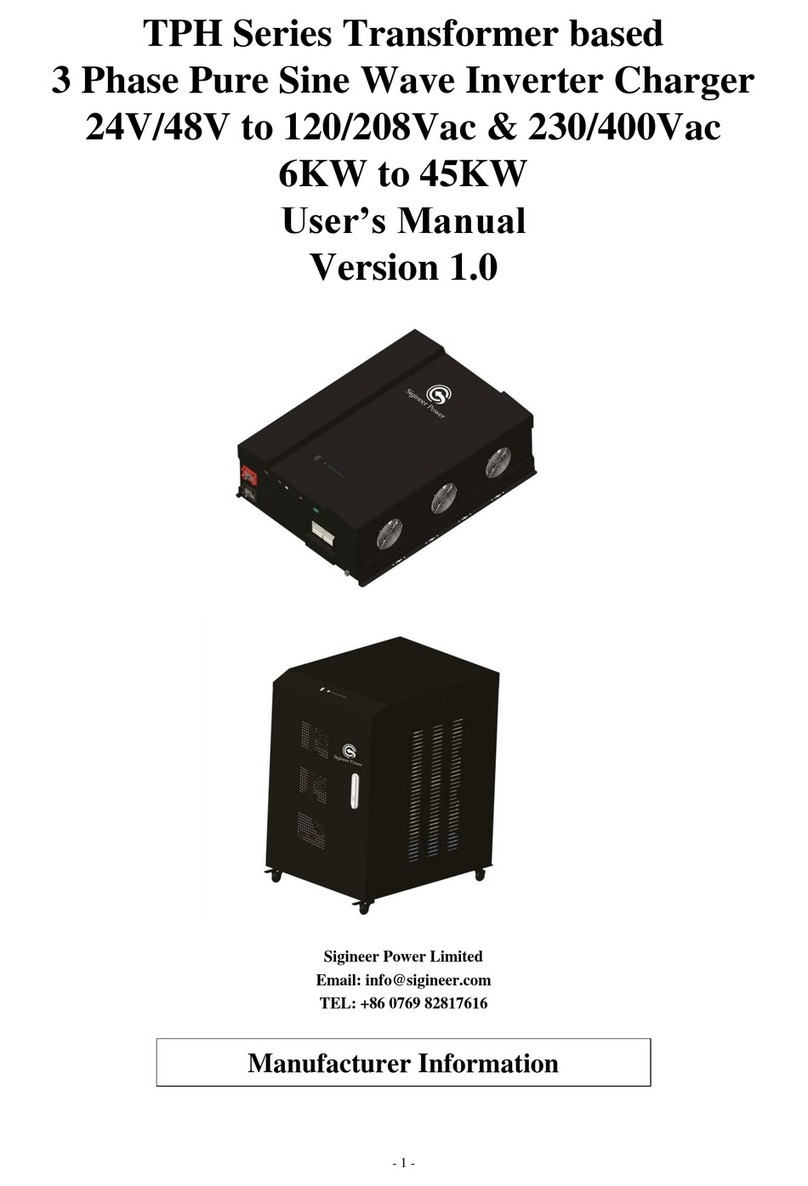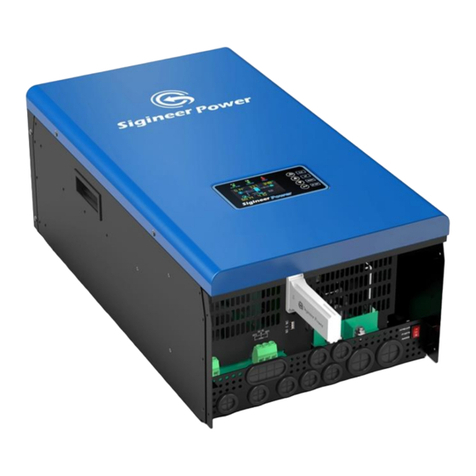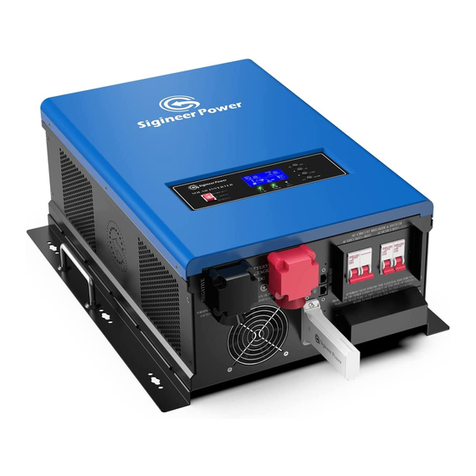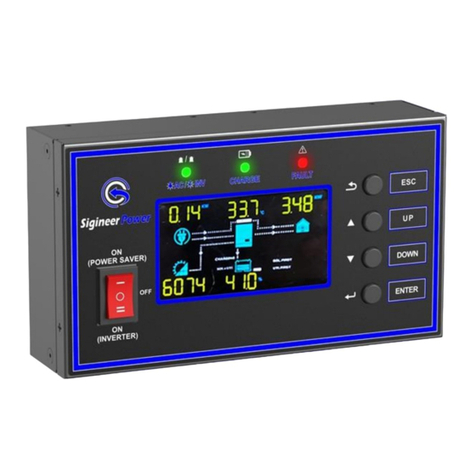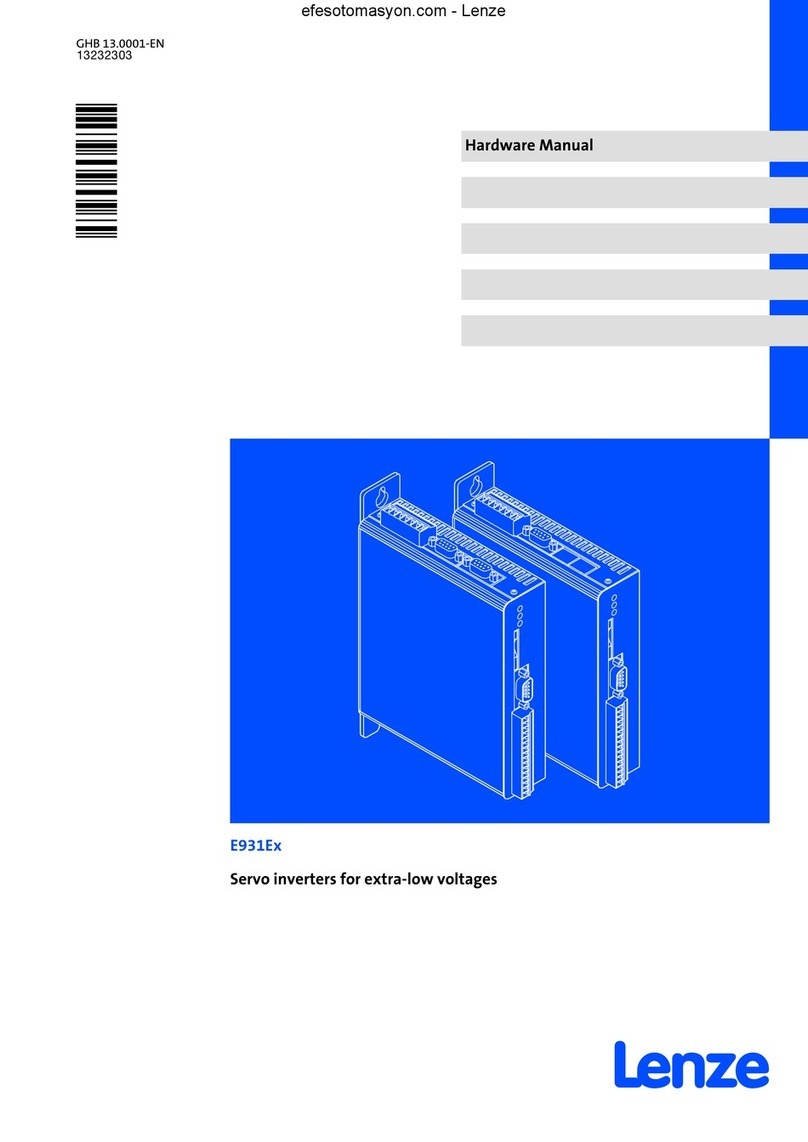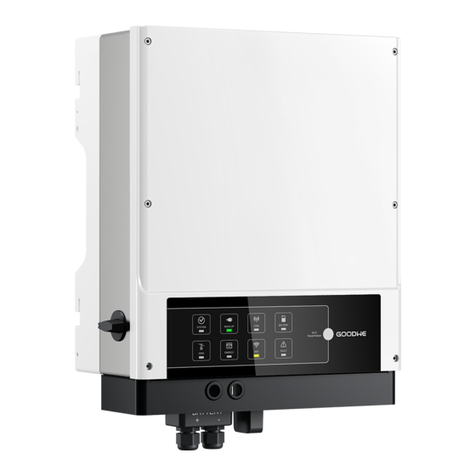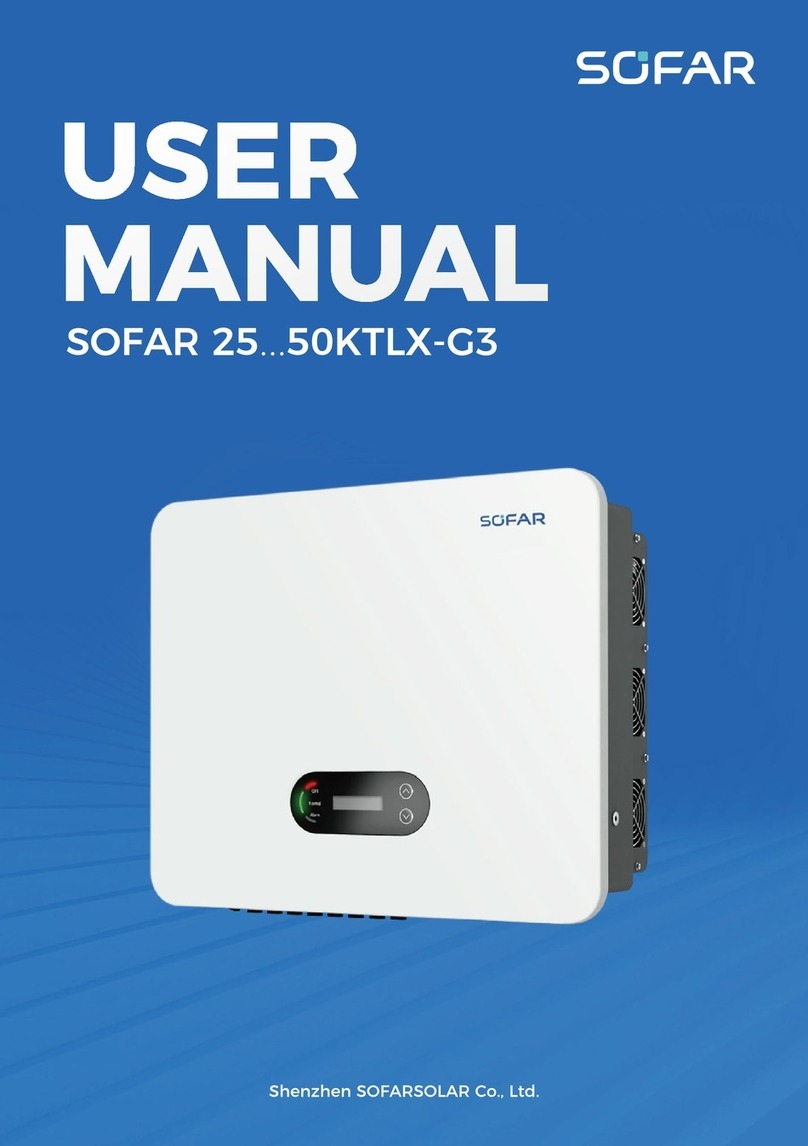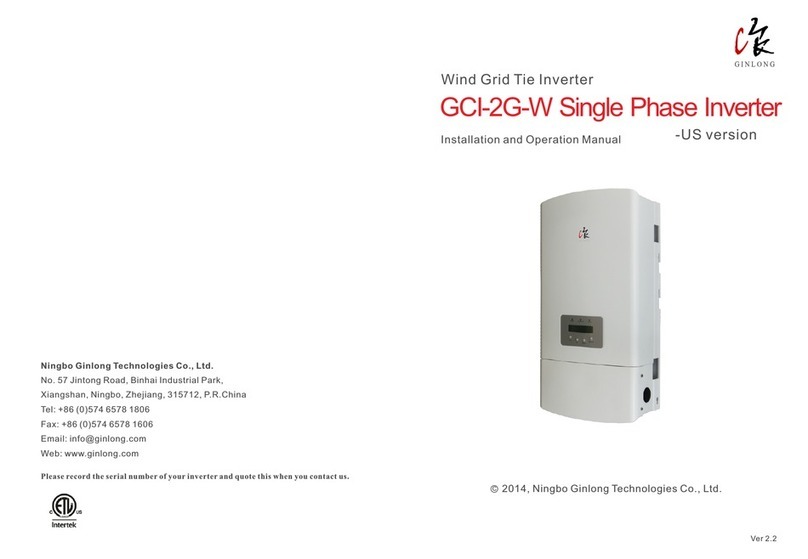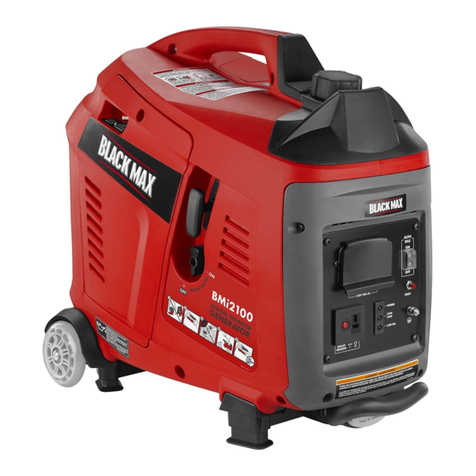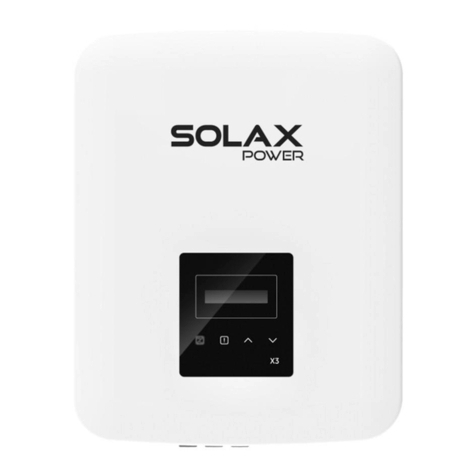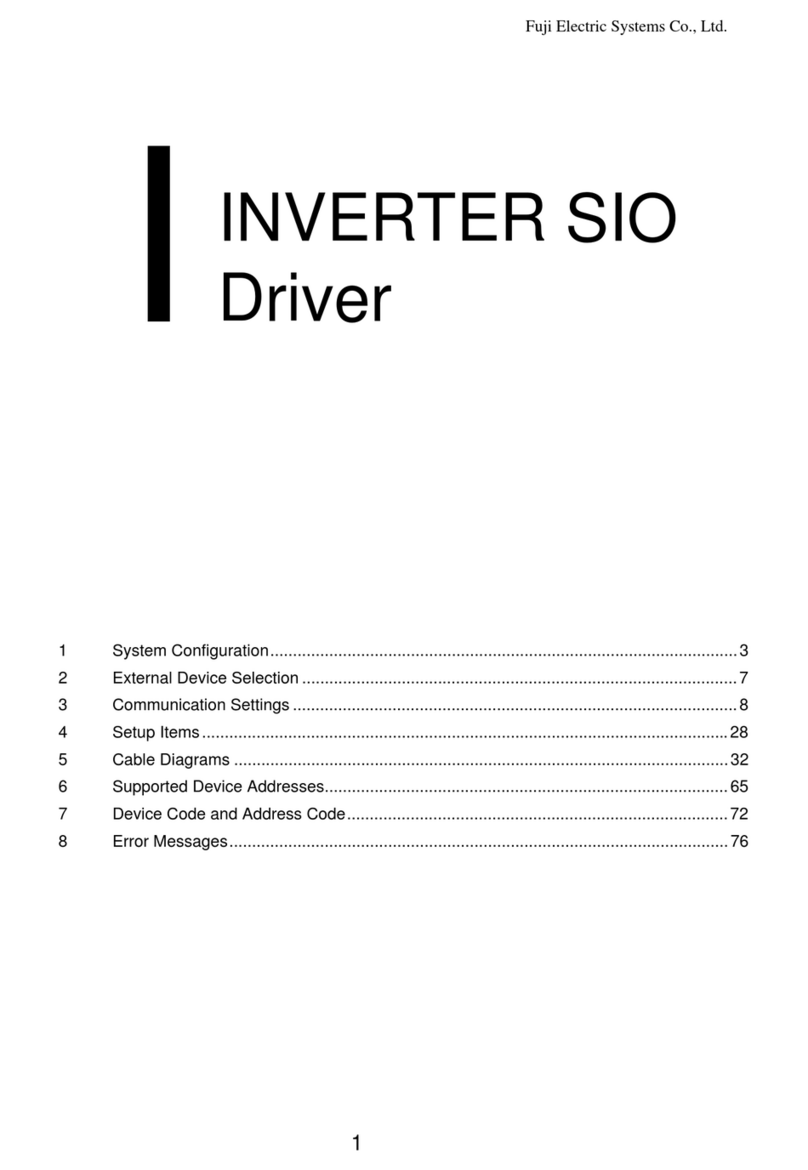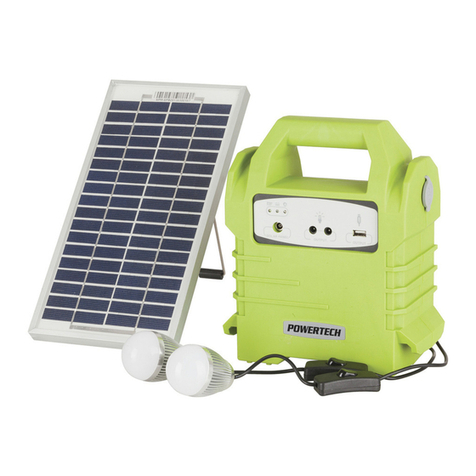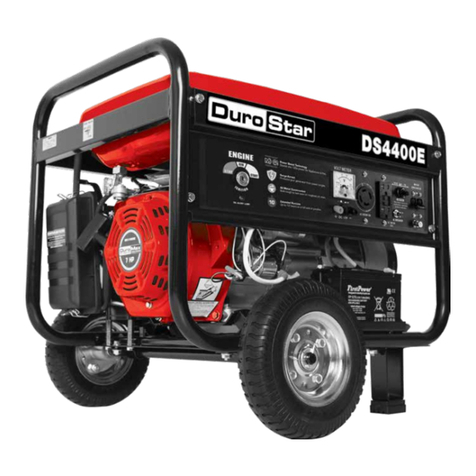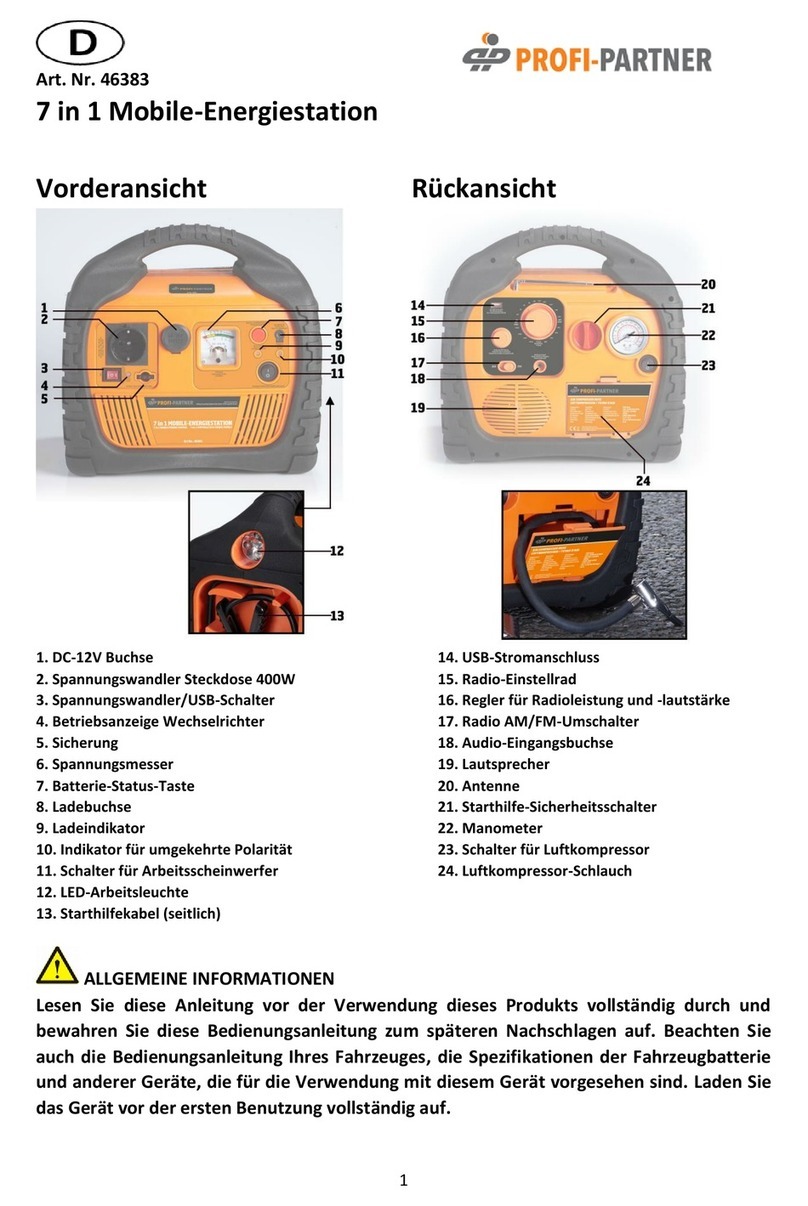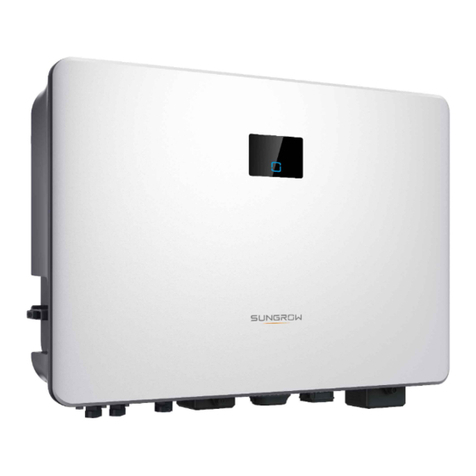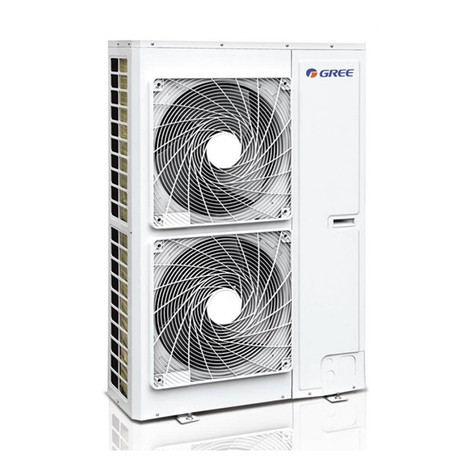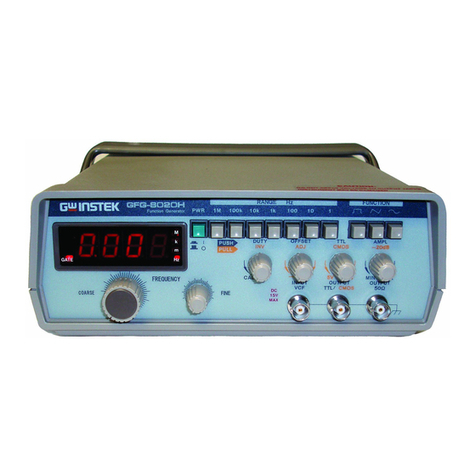Sigineer Power Power Star W7 User manual

Power Star W7 Pure Sine Wave Inverter/Charger User’s Manual www.sigineer.com
1
Power Star W7 Inverter/Charger
600W&1000W
Pure Sine Wave
User’s Manual
Shenzhen Sigineer Power CO.,LTD.
Email: info@sigineer.com
TEL: +86 755 2160 7078
FAX: +86 755 6165 8278
Add: Bld A, Jiali Industrial Zone, Yuanfen Rd, Longhua, Shenzhen, 518100, China

Power Star W7 Pure Sine Wave Inverter/Charger User’s Manual www.sigineer.com
2
Table of Contents
1 Important Safety Information.....................................................................................................................3
1.1 General Safety Precautions .....................................................................................................................3
1.2 Precautions When Working with Batteries ..............................................................................................4
2 Introduction...............................................................................................................................................4
2.1 General Information................................................................................................................................4
2.4 Features .................................................................................................................................................5
2.5 Electrical Performance ..........................................................................................................................5
2.5.1 Invert ............................................................................................................................................5
2.5.2 AC Charger ...................................................................................................................................6
2.5.3 Transfer.........................................................................................................................................8
2.5.4 Remote Operation .........................................................................................................................8
2.5.5 Protections ....................................................................................................................................9
2.5.7 LED Indicator ...............................................................................................................................9
2.5.8 Audible Alarm.............................................................................................................................10
2.5.9 FAN Operation............................................................................................................................10
2.5.10 DIP Switches.............................................................................................................................11
2.5.11 Auto Generator Start(Optional)..................................................................................................13
2.5.12 Battery Temperature Sensing(Optional).....................................................................................13
2.5.13 Other Features...........................................................................................................................13
3 Installation...............................................................................................................................................15
3.1 Location.........................................................................................................................................15
3.2 DC Wiring Recommendation .........................................................................................................15
3.3 AC Wiring Recommendations ........................................................................................................16
3.4 Grounding......................................................................................................................................17
3.5 Mounting Flange............................................................................................................................17
4 Maintenance & Troubleshooting..............................................................................................................19
5 Warranty..................................................................................................................................................21
Appendix 1 : PSW7 Series Inverter/Charger Spec Sheet .............................................................................21

Power Star W7 Pure Sine Wave Inverter/Charger User’s Manual www.sigineer.com
3
1 Important Safety Information
Save This Manual! Read this manual before installation, it contains important safety, installation
and operating instructions. Keep it in a safe place for future reference.
All wiring must follow the National Electric Code, Provincial or other codes in effect at the time
of installation, regardless of suggestions in this manual. All wires should be copper conductors.
1.1 General Safety Precautions
1.1.1 Before installing and using the PSW7 Series Pure Sine Wave Inverter/Charger, read the manual and
cautionary markings on the Inverter/Charger enclosure. Be sure to read all instructions and cautionary
markings for any equipment attached to this unit. Installers must be certified technicians or electricians.
1.1.2 This product is designed for indoor/compartment installation. Do not expose the inverter/charger to
rain, snow, spray, bilge or dust. To reduce risk of hazard, do not cover or obstruct the ventilation openings.
Do not install the inverter/charger in a zero-clearance compartment. Overheating may result. Allow at least
one inch of clearance around the inverter for air flow. Make sure that the air can circulate freely around the
unit. A minimum air flow of 145CFM is required.
1.1.3 To avoid a risk of fire and electronic shock. Make sure that existing wiring is in good electrical
condition; and that wire size is not undersized. Do not operate the Inverter with damaged or substandard
wiring.
1.1.4 This equipment contains components which can produce arcs or sparks. To prevent fire or explosion
do not install in compartments containing batteries or flammable materials or in locations which require
ignition protected equipment. This includes any space containing gasoline-powered machinery, fuel tanks,
or joints, fittings, or other connection between components of the fuel system. See Warranty for instructions
on obtaining service.
1.1.5 Do not dis-assemble the Inverter/Charger. It contains no user serviceable parts. Attempting to service
the Inverter/Charger yourself may result in a risk of electrical shock or fire. Internal capacitors remain
charged after all power is disconnected.
1.1.6 To reduce the risk of electrical shock, disconnect both AC and DC power from the Inverter/Charger
before attempting any maintenance or cleaning. Turning off controls will not reduce this risk
CAUTION: Equipment damage
The output side of the inverter’s AC wiring should at no time be connected to public power or a generator.
This condition is far worse than a short circuit. If the unit survives this condition, it will shut down until
corrections are made.
Installation should ensure that the inverter’s AC output is, at no time, connected to its AC input.
WARNING:LIMITATIONS ON USE
SPECIFICALLY, PLEASE NOTE THAT THE INVERTER/CHARGER SHOULD NOT BE USED IN
CONNECTION WITH LIFE SUPPORT SYSTEMS OR OTHER MEDICAL EQUIPMENT OR DEVICES.
WE MAKE NO WARRANTY OR REPRESENTATION IN CONNECTION WITH THEIR PRODUCTS
FOR SUCH USES. USING THE INVERTER/CHARGER WITH THESE PARTICULAR EQUIPMENTS
IS AT YOUR OWN RISK.

Power Star W7 Pure Sine Wave Inverter/Charger User’s Manual www.sigineer.com
4
1.2 Precautions When Working with Batteries
1.2.1 If battery acid contacts skin or clothing, wash immediately with soap and water. If acid enters eye,
immediately flood eye with running cold water for at least 20 minutes and get medical attention
immediately.
1.2.2 Never smoke or allow a spark or flame in vicinity of battery or engine.
1.2.3 Do not drop a metal tool on the battery. The resulting spark or short-circuit on the battery of other
electrical part may cause an explosion.
1.2.4. Remove personal metal items such as rings, bracelets, necklaces, and watches when working with a
lead-acid battery. A lead-acid battery produces a short-circuit current high enough to weld a ring or the like
to metal, causing a severe burn.
1.2.5 To reduce the risk of injury, charge only rechargeable batteries such as deep-cycle lead acid, lead
antimony, lead calcium gel cell, absorbed mat, and NiCad/NiFe or Lithium battery. Other types of batteries
may burst, causing personal injury and damage.
2 Introduction
2.1 General Information
Thank you for purchasing the PSW7 Series Pure Sine Wave Inverter/Charger.
The PSW7 Series Pure Sine Wave Inverter/Charger is a transformer based inverter and battery charger with
an unprecedented conversion efficiency of 90%.
This lines has two popular models: the 600 watt inverter, 1000 watt invertr.
It features power factor corrected, sophisticated multi-stage charging control and pure sine wave output with
high surge capability to meet power needs of all sorts of demanding loads without putting the equipment at
risk.
In response to the increasing demand of more advanced battery charging, our engineering team equipped the
inverter with a Battery Temperature Sensing probe for increased charging precision.
The generous 300% surge capacity of 20 seconds makes it possible to support demanding inductive loads.
The AC/Battery priority, auto generator start functionality and optional built-in charger make it ideally
suitable to work in backup power or anti-idle applications.
When customized to Battery priority mode via a DIP switch, the Power Star W7 inverter will extract
maximum power from external power sources and a minimal cycle of battery will be required. With the
availability of auto generator start, an electrical generator can be integrated into the system and started when
the battery voltage goes low.
With audible buzzer and remote LCD panel, the inverter gives the users comprehensive information of the
operation status, making it easier for maintenance and troubleshooting.
Thus the PSW7 Series Pure Sine Wave Inverter/Charger is suitable for applications including renewable
energy systems, utility, truck, RV and emergency vehicles etc.
To get the most out of the power inverter, it must be installed, used and maintained properly. Please read the
instructions in this manual before installing and operating.

Power Star W7 Pure Sine Wave Inverter/Charger User’s Manual www.sigineer.com
5
2.3 Mechanical Drawing
2.4 Features
Smart remote LCD control
Auto Generator Start(Optional)
Battery Temperature Sensing for increased charging precision(Optional)
Manual 50Hz/60Hz output frequency switch
Maximum 90% conversion efficiency
High surge output capability, 300% peak load for 20 seconds
Low quiescent current
Battery type selector for 8 types of batteries and de-sulphation for completely drained batteries
10ms transfer time fromAC to battery for continuous load operation
15 sec DC toAC transfer delay, improved protection for generator driven loads
Thermally controlled variable speed fan for more efficient cooling
Extensive protections against various harsh situations
2.5 Electrical Performance
2.5.1 Invert
Topology
The PSW7 Series pure sine wave inverter/charger is built according to the following topology.
Invert: Full Bridge Topology.
Charge: Isolated Boost Topology
When operating in invert mode, the direct current (DC) that enters the inverter from the batteries is filtered

Power Star W7 Pure Sine Wave Inverter/Charger User’s Manual www.sigineer.com
6
by a large input capacitor and switched “On” and “Off” by the Metal Oxide Silicon Field Effect Transistors
(MOSFET) at a rate of 50 Hz or 60Hz, and directed into the transformer which steps the voltage up to 230 or
120 volts. The unit has a 16bit, 4.9MHZ microprocessor to control the output voltage and frequency as the
DC input voltage and/or output load varies.
Because of high efficiency MOSFETs and the heavy transformers, it outputs PURE SINE WAVE AC.
The peak invert efficiency of PSW7 Series is 90%.
Overload Capacity
The Power Star inverter charger has different
overload capacities, making it ideal to handle
demanding loads.
1 For 110%<Load<125% (±10%), no audible alarm
in 14 minutes, beeps 0.5s every 1s in the 15th minute,
and Fault (Turn off) after the 15th minute.
2 For 125%< Load<150% (±10%), beeps 0.5s every 1s and Fault (Turn off) after the 1 minute.
3 For 300%≧Load>150% (±10%), beeps 0.5s every 1s and Fault (Turn off) after 20s.
Caution:
After the inverter is switched on, it takes 3-5 seconds for it to self diagnose and get ready to deliver full
power. Hence, always switch on the load(s) after a few seconds of switching on the inverter. Avoid
switching on the inverter with the load already switched on. This may prematurely trigger the overload
protection. When a load is switched on, it may require initial higher power surge to start. Hence, if multiple
loads are being powered, they should be switched on one by one so that the inverter is not overloaded by the
higher starting surge if all the loads are switched on at once.
2.5.2 AC Charger
The PSW7 Series pure sine wave inverter/charger is equipped with an active PFC (Power Factor Corrected)
multistage battery charger. The PFC feature is used to control the amount of power used to charge the
batteries in order to obtain a power factor as close as possible to 1.
Unlike other inverters whose max charging current decreases according to the input AC voltage, PSW7
Series pure sine wave inverter/charger is able to output max charge current as long as input AC voltage is in
the range of 164-243VAC(95-127VAC for 120V model), and AC freq is in the range of 48-54Hz(58-64Hz
for 60Hz model).
The PSW7 Series pure sine wave inverter/charger has a very rapid charge current available, and the max
charge current can be adjusted from 0%-100% via a liner switch on the DC side of the inverter. This will be
helpful if this powerful charger apply charging on a small capacity battery bank.
Choosing “0”in the battery type selector will disable charging function.
There are three main charging stages:
Bulk Charging: This is the initial stage of charging. While Bulk Charging, the charger supplies the battery
with controlled constant current. The charger will remain in Bulk charge until the Absorption charge voltage
(determined by the Battery Type selection) is achieved.
Software timer will measure the time from charger start until the battery charger reaches 0.3V below the
boost voltage, then take this time as T0 and T0×10 = T1.
Battery type selector
Switch
setting
Description
Boost /
Vdc
Float /
Vdc
0
Charger Off

Power Star W7 Pure Sine Wave Inverter/Charger User’s Manual www.sigineer.com
7
Absorb Charging: This is the second charging stage
and begins after the absorb voltage has been reached.
Absorb Charging provides the batteries with a
constant voltage and reduces the DC charging current
in order to maintain the absorb voltage setting.
In this period, the inverter will start a T1 timer; the
charger will keep the boost voltage in Boost CV
mode until the T1 timer has run out. Then drop the
voltage down to the float voltage. The timer has a
minimum time of 1 hour and a maximum time of 12
hours.
Float Charging: The third charging stage occurs at the end of the Absorb Charging time. While Float
charging, the charge voltage is reduced to the float charge voltage (determined by the Battery Type
selection*). In this stage, the batteries are kept fully charged and ready if needed by the inverter.
If the A/C is reconnected or the battery voltage drops below 12Vdc/24Vdc/48Vdc, the charger will reset the
cycle above.
If the charge maintains the float state for 10 days, the charger will deliberately reset the cycle to protect the
battery.
De-sulphation
The de-sulphation cycle on switch position 8 is marked in red because this is a very dangerous setting if you
do not know what you are doing. Before ever attempting to use this cycle you must clearly understand what
it does and when and how you would use it.
What causes sulphation? This occurs with infrequent use of the batteries, nor if the batteries have been left
discharged so low that they will not accept a charge. This cycle is a very high voltage charge cycle
especially designed to try to break down the sulphated crust that is preventing the plates from taking a
charge and thus allow the plates to clean up and accept a charge once again.
Warning!
1
Gel USA
14.0
13.7
2
AGM 1
14.1
13.4
3
Lithium Ion (LiFeP04)
14.6
13.7
4
Sealed lead acid
14.4
13.6
5
Gel EURO
14.4
13.8
6
Open lead acid
14.8
13.3
7
Calcium
15.1
13.6
8
De sulphation
15.5 (4 Hours
then Off)
9
Not used

Power Star W7 Pure Sine Wave Inverter/Charger User’s Manual www.sigineer.com
8
The de-sulphation charging should not be carried out on batteries with good conditions.
Charging depleted batteries
The PSW7 Series pure sine wave inverter/charger allows start up and through power with depleted batteries.
For 12VDC models, after the battery voltage goes below 10V, if the switch is still(and always) kept in "ON"
position, the inverter is always connected with battery whose voltage doesn’t drop below 2V, the inverter
will be able to charge the battery once qualified AC inputs.
Before the battery voltage going below 9VDC, the charging can activated when the switch is turned to “Off”,
then to “ON”.
When the voltage goes below 9VDC, and the power switch is turned to “OFF”or disconnect the inverter
from battery, the inverter will not be able to charge the battery once again, because the CPU lose memory
during this process.
Charging current for each model
Model Wattage
Battery Voltage
Charging Current
600W
12 Vdc
25±5 Amps
1000W
12 Vdc
40±5 Amps
The charging capacity will go to peak in around 3 seconds; this may probably cause a generator to drop
frequency, making inverter transfer to battery mode.
It is suggested to gradually put charging load on the generator by switching the charging switch from min to
max, together with the 15s switch delay, our inverter gives the generator enough time to spin up.
Caution:
Please use a small jeweler’s style flat-head screwdriver to turn the charge current
control switch gently to avoid breakage due to over-turning.
To guarantee the best performance ofAC charger when the AC input is from a
generator, the standby generator should be of at least 150% higher capacity than the
inverter.
Warning! Operation with an under-rated generator or generator with unqualified
wave form may cause premature failure which is not under warranty.
2.5.3 Transfer
While in the Standby Mode, the AC input is continually monitored. Whenever AC power falls below the
VAC Trip voltage (154 VAC, default setting), the inverter automatically transfers back to the Invert Mode
with minimum interruption to your appliances - as long as the inverter is turned on. The transfer from
Standby mode to Inverter mode occurs in approximately 10 milliseconds. And it is the same time from
Inverter mode to Standby mode.
Though it is not designed as a computer UPS system, this transfer time is usually fast enough to hold them
up.
There is a 15-second delay from the time the inverter senses that continuously qualified AC is present at the
input terminals to when the transfer is made. This delay is built in to provide time for a generator to spin-up
to a stable voltage and avoid relay chattering. The inverter will not transfer to generator until it has locked
onto the generator’s output. This delay is also designed to avoid frequent switch when input utility is
unstable.
2.5.4 Remote Operation

Power Star W7 Pure Sine Wave Inverter/Charger User’s Manual www.sigineer.com
9
Apart from the switch panel on the front of the inverter, an extra LCD switch panel connected to the remote
port at the DC side of the inverter through a RJ45 cable can also control the operation of the inverter.
If an extra switch panel is connected to the inverter via “remote control port”, together with the master
switch panel on the inverter case, the two panels will be connected and operated in parallel, whichever first
switches from “Unit Off” to “Power saver off” or “Power saver on”, it will power the inverter on.
If the commands from the two panels conflict, the inverter will accept command according to the following
priority:
Power saver on> Power saver off> Power off
Only when both panels are turned to “Unit Off” position, will the inverter be powered off.
The whole PSW7 Series inverter is designed with extraordinarily low idle power consumption which is
approximately 1.5% of its rated power.
PSW7 Series Inverter/Charger Idle Power Consumption (in Watts)
Model
Power Saver Off
Power Saver Auto
Idle(Max)
3Secs(Max)
Unit Off Charging
600W
18W
7.5W
3W
1KW
22W
9W
For more detailed technical information, please contact us.
2.5.5 Protections
The PSW7 Series inverter/charger is equipped with extensive protections against various harsh
situations/faults.
These protections include:
AC Input over voltage protection/AC Input low voltage protection
Low battery alarm/High battery alarm
Over temperature protection/Over load protection
Short Circuit protection (1s after fault)
Back feeding protection on the AC output
When Over temperature /Over load occur, after the fault is cleared, the master switch has to be reset to
restart the inverter.
The Low battery voltage trip point can be customized from defaulted value of 10VDC to 10.5VDC through
the SW1 on the DIP switch.
The inverter will go to Over-temp protection when the heat sink temps. ≥105ºC (221℉), and will go to Fault
(shutdown Output) after 30 seconds. After temp drops to 90ºC (194℉), the switch has to be reset to activate
the inverter.
The PSW7 Series Inverter has back feeding protection which avoids presenting an AC voltage on the AC
input terminal in Invert mode.
After the reason for fault is cleared, the inverter has to be reset to start working.
2.5.7 LED Indicator

Power Star W7 Pure Sine Wave Inverter/Charger User’s Manual www.sigineer.com
10
AC MODE
GREEN LED on “AC Input Mode”
INVERTER ON
GREEN LED on “Invert Mode”
FAST CHARGE
Yellow LED on “Fast CHG”
FLOAT CHARGE
GREEN LED on “Float CHG”
OVER TEMP TRIP
RED LED on “Over Temp”
OVER LOAD TRIP
RED LED on “Over Load”
CHARGING
GREEN LED on “Ready Position”
Please refer to ‘Indicator and Buzzer’for the detailed information.
2.5.8 Audible Alarm
The inverter also gives audible alarms when the following situations occur.
Battery Voltage Low
Inverter green LED Lighting, and the buzzer beep 0.5s every 5s.
Battery Voltage High
Inverter green LED Lighting, and the buzzer beep 0.5s every 1s,
and Fault after 60s.
Invert Mode Over-Load
(1)110%<load<125%(±10%), No audible alarm in 14 minutes,
Beeps 0.5s every 1s in 15th minute and Fault after 15 minutes;
(2)125% <load<150%(±10%), Beeps 0.5s every 1s and Fault after 60s;
(3)Load>150%(±10%), Beeps 0.5s every 1s and Fault after 20s;
Over Temperature
Heat sink temp. ≥105ºC(221℉), Over temp red LED Lighting, beeps
0.5s every 1s;
2.5.9 FAN Operation
For 600W-1KW models, there is one multiple controlled DC fan.
The DC fans are designed to operate according to the following logic:
Condition
Enter Condition
Leave condition
Speed
HEAT SINK
TEMPERATURE
T ≤ 60℃(140℉)
T > 65℃(149℉)
OFF
65℃(149℉)≤T < 85 ℃(185℉)
T ≤60℃(140℉) or T ≥ 85℃(185℉)
50%
Line Mode
Inverter Mode
Fast Charge
Float Charge
Alarm
Over Temp
Over Load
Power Saver
Battery Type Selector

Power Star W7 Pure Sine Wave Inverter/Charger User’s Manual www.sigineer.com
11
T > 85℃(185℉)
T ≤80℃(176℉)
100%
CHARGER
CURRENT
I ≤ 15%
I ≥ 20%
OFF
20%< I ≤ 50%Max
I≤ 15% or I > 50%Max
50%
I > 50%Max
I ≤ 40%Max
100%
LOAD Percentage
(INV MODE)
Load < 30%
Load ≥ 30%
OFF
30% ≤ Load < 50%
Load ≤ 20% or Load ≥ 50%
50%
Load ≥ 50%
Load ≤ 40%
100%
Allow at least 1 inch of clearance around the inverter for air flow. Make sure that the air can circulate freely
around the unit.
Fan noise level <60db at a distance of 1m
2.5.10 DIP Switches
On the DC end of inverter, there are 5 DIP switches which enable users to customize the performance of the
device to suit the specific configuration.
Switch #
Switch Function
Position: 0
Position: 1
SW1(AC Priority)
Low Battery Trip Point
10.0VDC
10.5VDC
SW1(Battery Priority)
10.5VDC
11.5VDC
SW2(230Vac)
AC Input Range
176-242Vac±4%
164-264Vac(40Hz+)±4%
SW2(120Vac)
AC Input Range
100-135Vac±4%
90-135Vac(40Hz+)±4%
SW3
Power Save Override ON/OFF
Unit Off
Charging
Power Saver On( 3 sec)
SW4
Frequency Switch
50Hz
60Hz
SW5
Battery/AC Priority
AC Priority
Battery Priority
Low Battery Trip Volt:
Deep discharge of the lead acid battery and many others leads to high losses in capacity and early aging.
Thus discharging a battery properly according to its characteristics is getting more and more important.
In different applications, different low voltage disconnection level is preferred. For example, for solar and
renewable energy application, users many intend to have less DOD(depth of discharge) to prolong the
battery cycle life. While for mobile or emergency power backup applications, users many intend to have
more DOD to reduce battery capacity and on board weight.
Our inverter chargers are designed with circuit to shut off inverter at adjustable low battery cutoff voltage
set points.
For 12VDC model in AC priority mode, the Low Battery Disconnect Volt is set at 10.0VDC at position 0 by
default. It can be customized to 10.5VDC using SW1, this is to prevent batteries from over-discharging
while there is only a small load applied on the inverter.
This low battery cutout voltages are bought up by 0.5 and 1.0 volt in Battery priority mode, giving the
batteries more protection.
*2 for 24VDC, *4 for 48VDC
AC Input Range:
There are different acceptable AC input ranges for different kinds of loads.
For some relatively sensitive electronic devices, a narrow input range of 184-253VAC (100-135V for
120VAC models) is required to protect them.
While for some resistive loads which work in a wide voltage range, the input AC range can be customized to
154-253VAC (90-135V for 120VAC models), this helps to power loads with the most AC input power

Power Star W7 Pure Sine Wave Inverter/Charger User’s Manual www.sigineer.com
12
without frequent switches to the battery bank.
In order to make the inverter accept dirty power from a generator, when the SW2 is switched to position “1”,
the inverter will bypass an AC input with a higher voltage(164-264Vac for 230Vac models, 90-135Vac for
120Vac models) and wider frequency (40Hz plus for 50Hz/60Hz). Accordingly, the AC charger will also
work in a higher voltage(174-254Vac for 230Vac models, 100-135Vac for 120Vac models) wider frequency
range (43Hz plus for 50Hz/60Hz).
This will avoid frequent switches between battery and generator. But some sensitive loads will suffer from
the low quality power.
The pros and cons should be clearly realized before you do the setting.
Power Saver & Unit Off Charging:
Under the Battery Priority Mode (SW5 in position “1”), the inverter can be switched between two modes:
Power Saver Mode (SW3 in position “1”) and Unit Off Charging Mode (SW3 in position “0”). The power
Switch should be in “Power saver on” position all the time for using these functions.
In Power Saver Mode, the inverter is initially in standby mode and sends a pulse to detect the presence of a
load every 3 seconds. Each pulse lasts for 250ms. The inverter will remain in standby mode until a load has
been detected. Then it will wake up from standby mode and start to invert electricity from the battery bank
to supply the load. As this function is under Battery Priority, the inverter will always prefer to invert
electricity from battery first even there is a qualified AC input present. Only when the battery voltage is
lower than the low voltage alarm point, will the inverter switch to AC input power to charge the battery and
supply the load at the same time.
This Power Saver Mode can be changed to Unit Off Charging mode via SW3 by switching it to “0” position.
(SW5 still in “1”).
“Unit Off Charging”will enable the inverter charger to charge batteries as much as possible while without
discharging them.
In “Unit Off Charging”mode, the inverter will stay in standby mode without sensing loads. It won’t output
any power even if a load is turned on, and only stay idle in this mode when there is no AC input.
When a qualified AC input is present, it will start charging the battery and transfer power to loads.
This feature is ideally suitable for applications where energy conservation for batteries is required.
Charging will be activated once qualified AC exists, while discharging is disabled.
The inverter only consumes as little as 3 watts in “Unit Off Charging”mode.
Output Frequency:
The output frequency of the inverter can be set at either 50Hz or 60Hz by SW4 which make the inverter
charger an international models for most electricity systems.
AC/Battery Priority:
The inverter chargers are designed with AC/Battery priority switch (DIP switch #5).
Position “0”for AC priority mode, Position”1”for battery priority mode.
In AC Priority Mode, when AC input is present, the battery will be charged and the inverter will transfer the
input AC to power the load. Only when the AC input is stable for a continuous period of 15 days will the
inverter start a battery inverting/discharging cycle to protect the battery. After one normal charging cycle
AC through put will be restored. For more info, please refer to our manual at AC Charging Section.
When set in battery priority, the inverter will invert from battery despite the AC input. Only when the
battery voltage reaches the low voltage alarm point will the inverter transfer to AC Input, charge battery, and
switch back to battery when the battery is fully charged. This function is mainly for wind/solar systems
using utility power as back up.
The AC/Battery Priority function can be activated by sliding the switch even when the inverter is in
operation.

Power Star W7 Pure Sine Wave Inverter/Charger User’s Manual www.sigineer.com
13
Note: In battery priority mode, when qualified AC inputs for the first time and the battery voltage is
below 12.5Vdc(12.5Vdc for 12Vdc, 25Vdc for 24Vdc, 51Vdc for 48Vdc), the inverter will go into
battery priority mode only after a cycle of bulk charging and absorb charging is finished. The inverter
will not go into float charging mode.
2.5.11 Auto Generator Start
The inverter can start up a generator when battery voltage goes low.
When the inverter goes to low battery alarm, it can send a signal to start a generator, and turn the generator
off after battery charging is finished.
The auto gen start feature will only work with generators which have automatic starting capability. The generator
must have start and stop controls [i.e., an electric starter and electric choke (for gasoline units)], and the safety
sensors to be able to start and stop automatically. There is an open/close relay, that will short circuit the positive
and negative cables from a generator start control. The input DC voltage can vary, but the max current the relay
can carry is 16Amp. The Auto Generator Start terminal pins are not polarized.
2.5.12 Battery Temperature Sensing
Applying the proper charge voltage is critical for achieving optimum battery performance and longevity. The
ideal charge voltage required by batteries changes with battery temperature.
When the battery voltage is over 40℃(104℉), it will reduce the charging voltage by 0.1Vdc with every
degree of temperature rise.
We recommend that you install Battery Temperature Sensors on all banks to protect your batteries and to
provide optimal charging of each bank.
The battery temperature sensor mounts on the side of a battery or any other location where the precise
temperature of battery can be detected such as battery mounting racks.
The following table describes approximately how much the voltage may vary depending on the temperature
of the batteries.
Inverter Condition
Temperature on BTS
Charger Operation
Charger Mode
BTS ≥ 50℃(122℉)
Automatically turns off charger
BTS ≤ 40℃(104℉)
Automatically turns on charger
Inverter Mode
40℃(104℉) ≤ BTS ≤ 50℃(122℉)
Increases the low voltage shut down
point by 0.5Vdc
BTS ≥ 50℃(122℉)
Over Temp Fault
2.5.13 Other Features
Battery voltage recovery start
After low battery voltage shut off (10V for 12V model), the inverter is able to restore to work after the
battery voltage recovers to 13V (with power switch still in “On”position). This function helps to save the
users extra labor to reactivate the inverter when the low battery voltage returns to acceptable range in
renewable energy systems.

Power Star W7 Pure Sine Wave Inverter/Charger User’s Manual www.sigineer.com
14
WARNING
Never leave the loads unattended, some loads (like a Heater) may cause accidents in such cases.
It is better to shut everything off after low voltage trip than to leave your load in the risk of fire.

Power Star W7 Pure Sine Wave Inverter/Charger User’s Manual www.sigineer.com
15
3 Installation
3.1 Location
Follow all the local regulations to install the inverter.
Please install the equipment in a location of Dry, Clean, Cool with good ventilation.
Working temperature: ‐10℃to 50℃(-14℉to 122℉)
Storage temperature: ‐40℃to 70℃(-40℉to 158℉)
Relative Humidity: 0% to 95%,non-condensing
Cooling: Forced air
Warning! Operation in a condensing environment will void the warranty.
3.2 DC Wiring Recommendation
It is suggested the battery bank be kept as close as possible to the inverter. The following table is a suggested
wiring option for DC cable with length from 1 meter to 5 meters.
Model
Watt
Battery
Voltage
Minimum Wire Gage
Model
Watt
Battery
Voltage
Minimum Wire Gage
0~15ft
15~20ft
0~15ft
15~20ft
600 Watt
inverter
12 Vdc
8ga
6ga
1000
Watt
inverter
12 Vdc
4ga
2ga
Please follow the above minimum wire size requirement.
One cable is always best, but if there is a problem obtaining for example 100mm²cable, use 2*50mm²or
3*35mm²instead, as long as the square area adds up. Performance of any product can be improved by
thicker cable and shorter runs (so if in doubt round up and keep the length as short as possible).
Battery cables must have crimped (or preferably, soldered and crimped) copper compression lugs unless
aluminum mechanical lugs are used. Soldered connections alone are not acceptable.
Battery terminal must be clean to reduce the resistance between the DC terminal and cable connection. A
buildup of dirt or oxidation may eventually lead to the cable terminal overheating during periods of high
current draw. Use a stiff wire brush and remove all dirt and corrosion from the battery terminals and cables.

Power Star W7 Pure Sine Wave Inverter/Charger User’s Manual www.sigineer.com
16
Reducing RF interference
To reduce the effect of radiated interference, twist the DC cables. To further reduce RF interference, shield
the cables with sheathing /copper foil / braiding.
Taping battery cables together to reduce inductance
Do not keep the battery cables far apart. In case it is not convenient to twist the cables, keep them taped
together to reduce their inductance. Reduced inductance of the battery cables helps to reduce induced
voltages. This reduces ripple in the battery cables and improves performance and efficiency.
WARNING
The torque rating range for DC terminal is 12.5NM-20.5NM (9.25-15.19 ft. lbs.), and the
suggested torque rating is 17NM (12.6 ft. lbs.). Over torquing may cause the bolt to break.
Equipment Damage
The inverter is not reverse polarity protected. Reversing the battery polarity on the DC
input connections will cause permanent damage to the inverter which is not covered under
warranty. Always check polarity before making connections to the inverter.
The inverter contains capacitors that may produce a spark when first connected to battery.
Do not mount in a confined a battery or gas compartment.
Ensure the inverter is off before disconnecting the battery cables, and that AC power is
disconnected from the inverter input.
3.3 AC Wiring Recommendations
We recommend using 12 to 14 AWG wire to connect to the ac terminal block.
When in AC mode the AC input power will supply both the loads and AC charger, a thicker wire gauge for AC Input
is required. Please consult a qualified electrician about the specific wire gauge required in terms of wire material and
inverter power.
Please do the wiring according to local regulations, call our tech support if you are not sure about how to wire any part
of your inverter.

Power Star W7 Pure Sine Wave Inverter/Charger User’s Manual www.sigineer.com
17
3.4 Grounding
Connect an AWG 8 gauge or greater copper wire between the grounding terminal on the inverter and the earth
grounding system or the vehicle chassis.
3.5 Mounting Flange
600W Model
1000W Model

Power Star W7 Pure Sine Wave Inverter/Charger User’s Manual www.sigineer.com
18
End View

Power Star W7 Pure Sine Wave Inverter/Charger User’s Manual www.sigineer.com
19
4 Maintenance & Troubleshooting
This troubleshooting guide contains information about how to troubleshoot possible error conditions while using the
SP Pure Sine Wave Inverter/Charger.
The following chart is designed to help you quickly pinpoint the most common inverter failures.
Indicator and Buzzer
Indicator on top cover
LED on Remote Switch
Status
Item
AC Line
Mode ON
INVERTER
ON
FAST CHG
FLOAT CHG
OVER TEMP
TRIP
OVER LOAD
TRIP
READY
ON
BATT
CHG
INVERTER
Alarm
Buzzer
Line Mode
CC
√
√
√
CV
√
√, blink
√
Float
√
√
√
Standby
√
Inverter
Mode
Inverter On
√
√
Power Saver
√
Inverter
Mode
Battery Low
√
√
√
Beep 0.5s every
5s
Battery High
√
√
√
Beep 0.5s every
1s
Overload On
Invert Mode
√
√
√
√
Refer to
“Audible
alarm”
Over-Temp On
Invert Mode
√
√
√
√
Beep 0.5s every
1s
Over-Temp On
Line Mode
√
√
√
√
√
Beep 0.5s every
1s
Over Charge
√
√
√
√
Beep 0.5s every
1s
Fault Mode
Fan Lock
Beep
continuous
Battery High
√
√
Beep
continuous
Inverter Mode
Overload
√
Beep
continuous
Output Short
√
√
Beep
continuous
Over-Temp
√
Beep
continuous
Over Charge
√
√
Beep
continuous
Back Feed
Short
Beep
continuous

Power Star W7 Pure Sine Wave Inverter/Charger User’s Manual www.sigineer.com
20
Symptom
Possible Cause(s)
Recommended Solution(s)
Inverter will not turn on during
initial power up.
Batteries are not connected, loose
battery-side connections.
Low battery voltage.
Check the batteries and cable
connections. Check DC fuse and
breaker.
Charge the battery.
No AC output voltage and no
indicator lights ON.
Inverter has been manually
transitioned to OFF mode.
Press the switch to Power saver
on or Power saver off position.
Inverter overload indicator on
Excessive AC output load or AC
output short
Defective inverter
Check AC output loads and
wiring
Inverter high temperature
indicator on
Excessive ambient temperature or
AC output load
Check AC output loads, increase
ventilation, derate the inverter if
ambient temperature is excessive.
AC output voltage is low and
the
inverter turns loads OFF in a
short time.
Low battery.
Check the condition of the
batteries and recharge if possible.
Charger is inoperative and unit
will not accept AC.
AC voltage has dropped
out-of-tolerance
Check the AC voltage for proper
voltage and frequency.
Charger is supplying a lower
charge rate.
Charger controls are improperly
set.
Low AC input voltage.
Loose battery or AC input
connections.
Refer to the section on adjusting
the “Charger Rate”.
Source qualified AC power..
Check all DC /AC connections.
Charger turns OFF while
charging
from a generator.
High AC input voltages from the
generator.
Load the generator down with a
heavy load.
Turn the generator output voltage
down.
Sensitive loads turn off
temporarily when transferring
between grid and inverting.
Inverter's Low voltage trip voltage
may be too low to sustain certain
loads.
Choose narrow AC voltage in the
DIP switch, or Install a UPS if
possible.
Noise from Transformer/case*
Applying specific loads such as
hair drier
Remove the loads
*The reason for the noise from transformer and/or case
When in inverter mode and the transformer and/or case of the inverter sometimes may vibrate and make noise.
The noise may come from transformer.
According to the characteristics of our inverter, there is one type of load which will most likely cause rattles of the
transformer, that is a half-wave load, load that uses only a half cycle of the power(see figure 1). This tends to cause
imbalance of magnetic field of transformer, reducing its rated working freq from 20 KHz to, say, maybe 15 KHz (it
varies according to different loads). This way, the freq of noise falls exactly into the range (200Hz-20 KHz) that
human ear can sense.
Table of contents
Other Sigineer Power Inverter manuals
